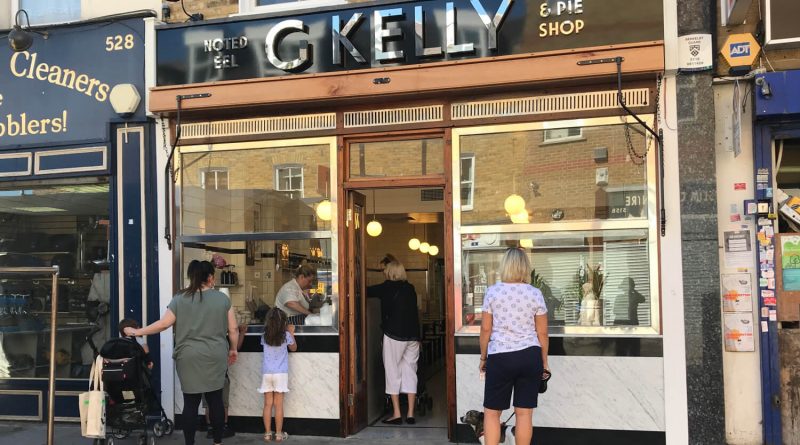Best things to do in Bow
There’s no need to hop on a plane, train or ferry if you’re looking for a good day out. Bow and its surrounding neighbourhoods have a surprising array of gems that will keep you entertained, well-fed and well-caffeinated without you having to travel afar.
From Georgian squares that were once home to war trenches to a hidden factory run by Sylvia Pankhurst, Bow is rich in cultural history. And, there’s more than a few culinary delights to keep you satiated on your tour of Bow.
Here’s our Editor’s picks of the best things to do in Bow.
Tredegar Square
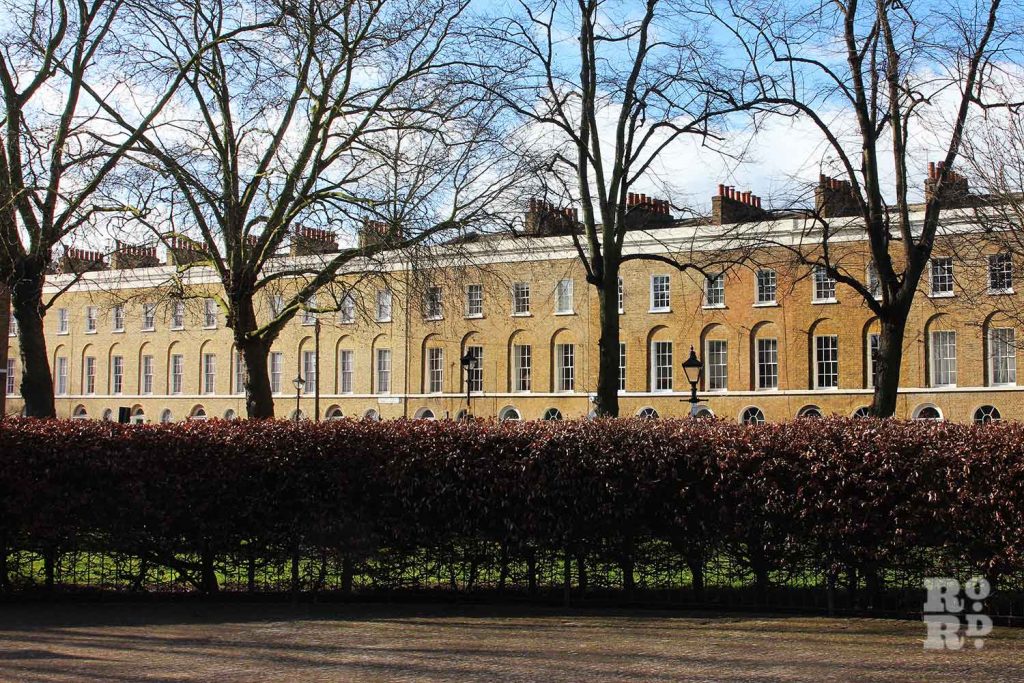
This tranquil haven, known as ‘London’s Little Lungs’, is perhaps the finest Georgian square in East London and just two minutes from Mile End Tube Station.
When you get out of the tube, cross the Bow Road and head down Rhondda Grove where you will se the domed Bengali temple, Hindu Pragati Sangha. At the end of the road, looming on the horizon, lies a stately church too, the New Testament Church of God.
Strike a right down pretty Morgan Street and you’ll find yourself in the peaceful Tredegar Square, lined with some of the East End’s most impressive Georgian housing, the north block being stuccoed.
The gates to the square are open all day to access the green oasis in the middle. Ornamental trees and shrubs provide shade and interest, making this a peaceful, song-filled spot to read a book or plot your onward journey.
This square has a fascinating history too. During WWII, for example, air-raid trenches were built under the gardens, uprooting its lawns with the aim of sheltering 10% of the local population.
Bow Public Library
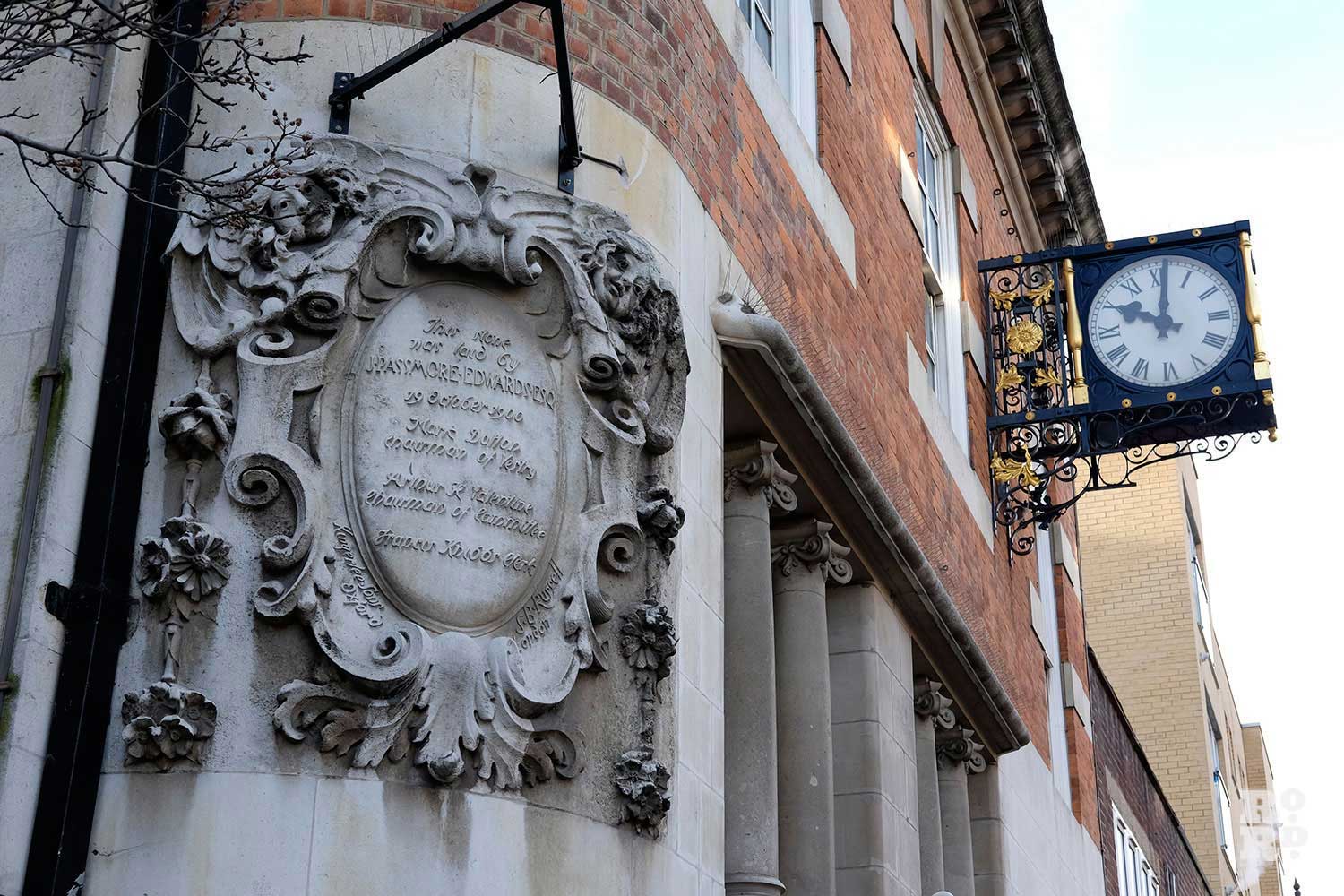
Next, head to Bow Public Library to admire the small but beautiful details of the building’s exterior.
The original Bow Library was designed by architect Mr S. B. Russell and initially two storeys. The ground floor had a news reading room, space to accommodate 33 readers, and a lending library with 12,000 volumes.
The old Bow Library eventually became too small and cramped to meet the growing need for books in the East End. There was an extension in 1932 that made structural alterations, and a further extension in around 1950.
Still not big enough to accommodate new readers, Bow Library was then moved in 1962 to Stafford Road. The remaining building became Vernon Hall, the building we walk by today. In 2002, this became the first ever Idea Store. The Idea Store is a public library that runs classes and courses for adults, as well as holding events. Pop in to pick up one of the library’s books on East End history.
Roman Road Market
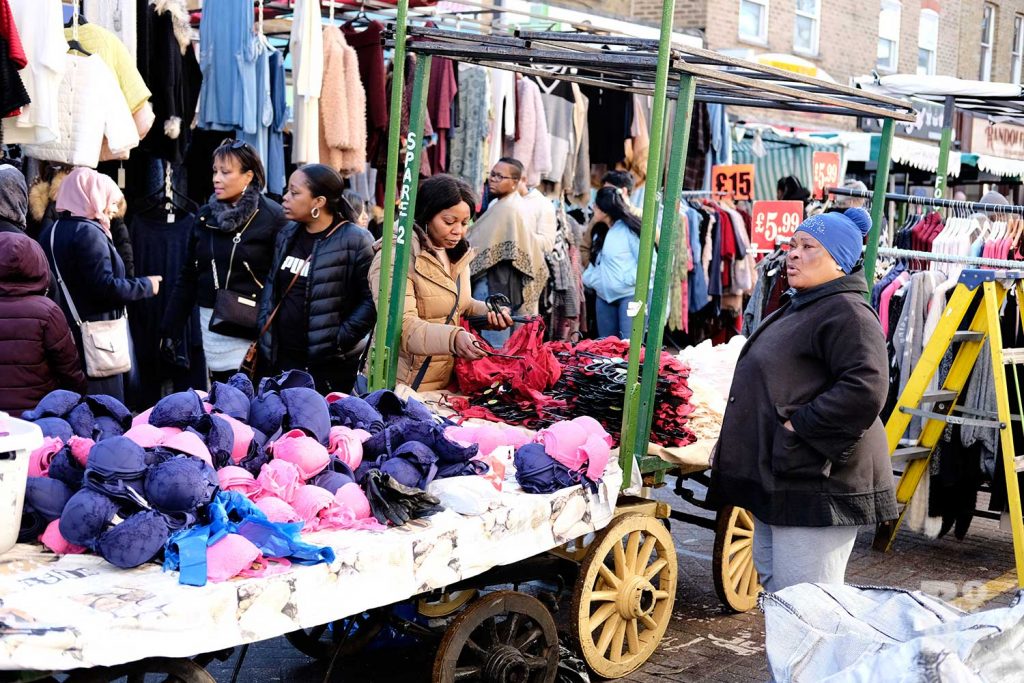
You can’t stop by Roman Road without paying its famous and historic market a visit, which runs on Tuesday, Thursdays and Saturdays. If you’re looking for some new clothes, freshly baked churros or a Turkish pancake, wind your way through the jungle of stalls that comprise Roman Road Market.
Dating back to 1843 when it first began, this market (aka The Roman) is an ever-evolving patchwork of old and new East London, with decades-old stalls rubbing shoulders with artisanal newcomers. From polenta to pet food, it’s got you covered.
G. Kelly Pie and Mash Shop
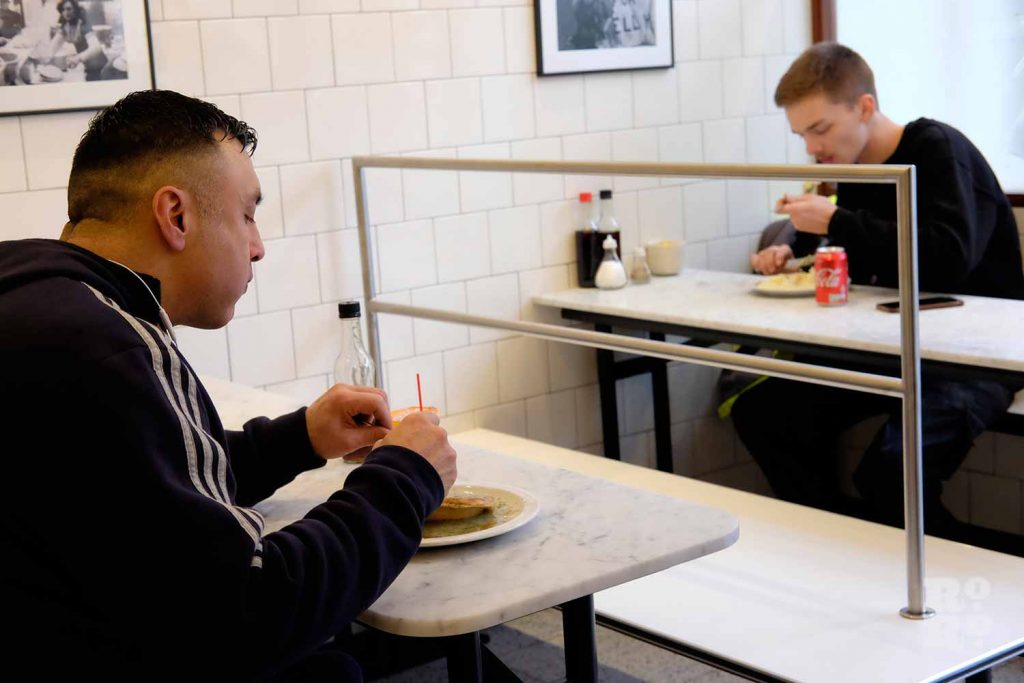
A visit to Roman Road would not be complete without a stop at G. Kelly’s Pie and Mash Shop. If eels or pie and liquor are not your cuppa, try the homemade apple crumble or buy a bottle of their branded chilli vinegar.
This one-hundred-year-old, East-End establishment at 526 Roman Road has been in the Vening family for three generations. Some of you may remember when there were two of them on the road, the other being at 600. That had been in the family for four generations.
Neil Vening, 28, has taken over the main responsibilities of running the shop. ‘The idea was always to get it as close to the original as possible,’ he says, his eyes flicking over the immaculate white tiles and faded photographs. The shop’s ‘new’ exterior is almost indistinguishable from one taken before World War Two. That’s the era Vening was aiming for.
All the mirrors in the shop are original. The doors are original The grills in the window were dug out of the attic and restored. The sign was made by Ged Palmer of Luminor Sign Co using original designs. Even the tiles were made by the same company as the originals were – Minton Hollins now owned and available from Jonhson Tiles. They also mince the meat themselves, by hand.
Vinarius
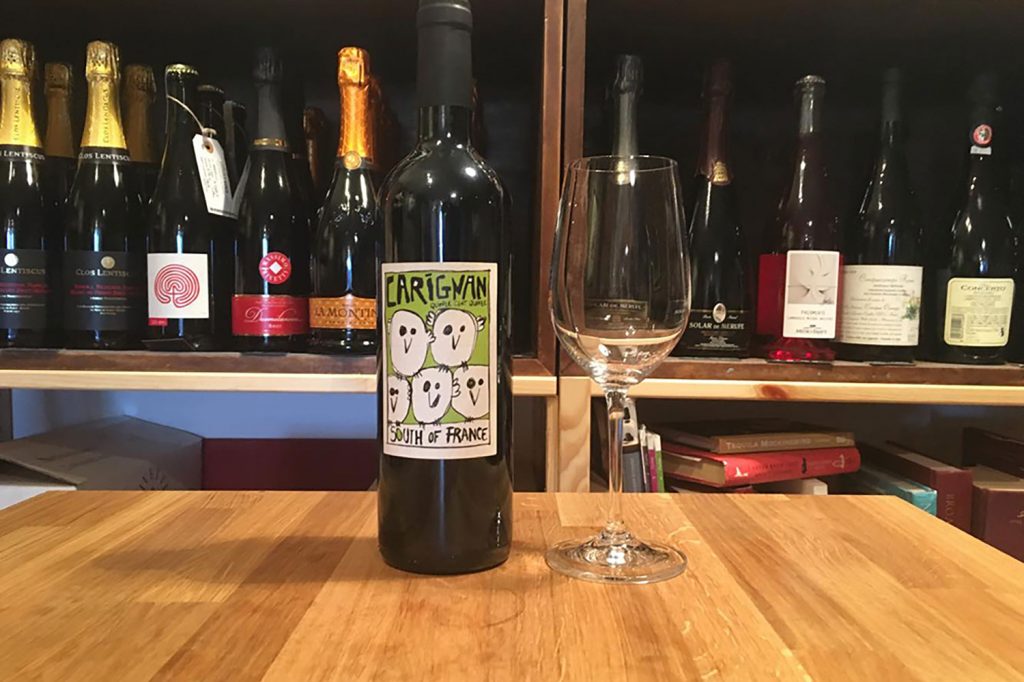
Wine aficionados will want to pick up a bottle of something special at Vinarius, one of London’s most respected wine shops with Italian, French and English wines from little-know vineyards, many of which are organic or biodynamic.
Vinarius is a wine place for wine lovers. The format is that of the classic and friendly Italian enoteca, or local wine shop and bar, adapted to contemporary East London life. ‘You can enjoy exclusive European wines by the glass here, or buy a bottle that you won’t be able to find anywhere else to drink at home’, explains co-owner Eugenio. Vinarius charges a very small corkage fee of £5 to share a bottle there, perhaps with some of their delicious burrata or truffle bruscetta, making it one of the most affordable ways to enjoy a good quality wine in a bar or restaurant in London.
Saint Sugar of London market stall
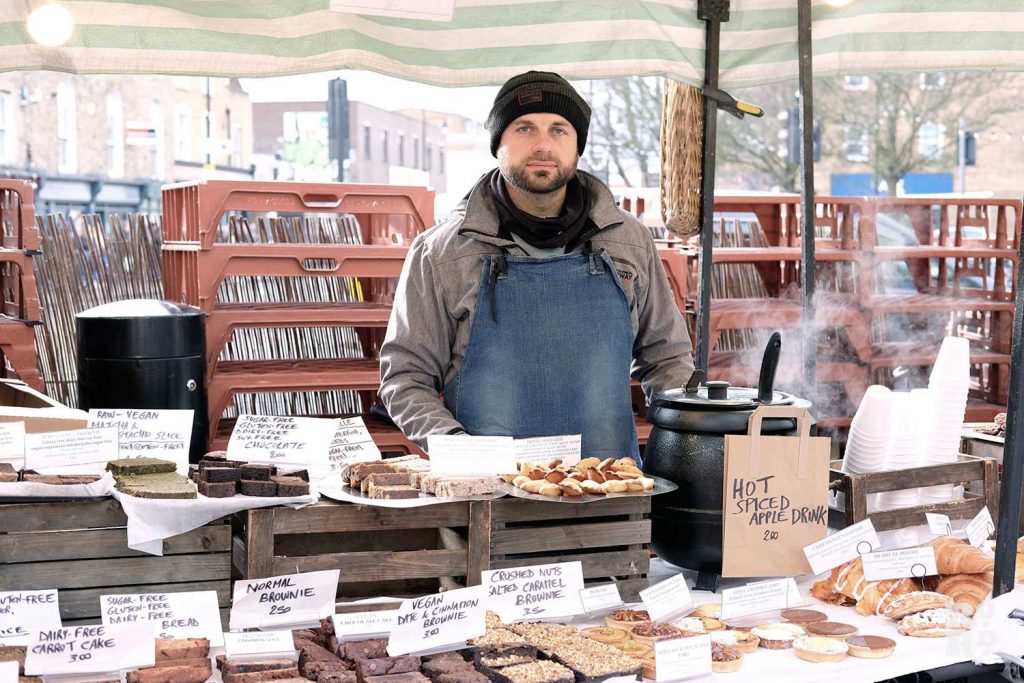
If you happen to be at the market on a Saturday, check out Saint Sugar’s food stall and pick up their freshly-baked bread of the week.
Kierkegaard bread? Rumzipan? Anti-oxidant bombs? It can only be Saint Sugar of London. The healthy eating bakery stall is a fixture on Roman Road and Brick Lane. The saint in question, Enzo Moschetta, started out with a single small table. Now his stall is piled high with vegan, paleo, gluten-free, sugar-free, soy-free and dairy-free baked goods.
Abbotts’ mural
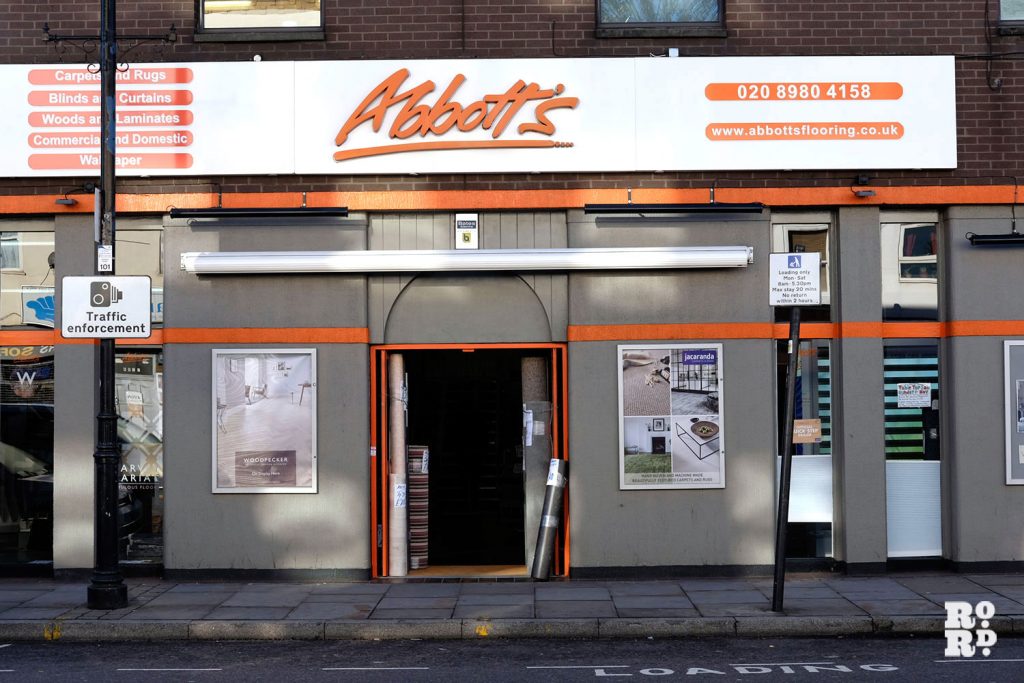
After you’ve stocked up on bread, walk fifty metres west bound and you’ll pass a bright orange store to your left. This is Abbotts Flooring, which has been trading on this very spot for over 130 years. They’ve adapted as times have changed, swapping rolls of lino for swirly patterned carpet. The fourth generation of Abbotts is now expanding into window dressings and fabrics, and their clients extend worldwide.
Walk around the side of the shop onto Dane Place and you’ll spot a large, painted hand peeling back a curtain to reveal a red No 8 Bus bursting through. Abbotts mural, which is still a work in progress, is as much a tribute to their four-generational family business as it is to the local culture. Can you guess what the scene on the far right of the mural is depicting?
Sylvia Pankhurst’s Toy Factory
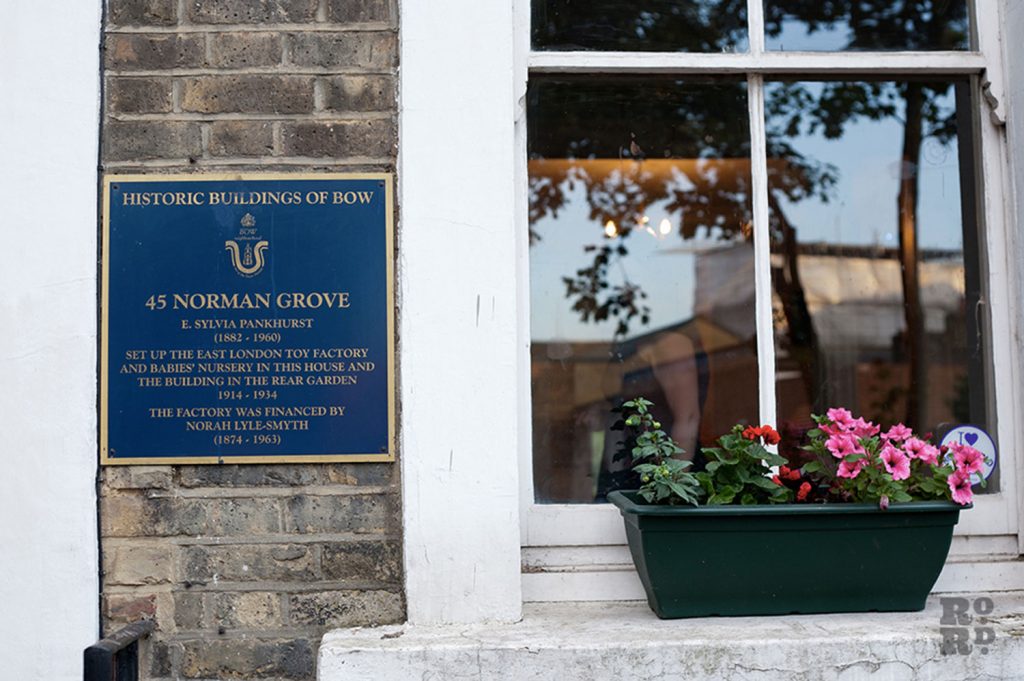
Another important historical spot lies just behind Roman Road, but you will have to look closely to find it. It’s just a stone’s throw beyond Abbots Mural – when standing on Dane Place with your back to the Roman, cross out of the cul-de-sac and right into Rosebank Gardens.
Ahead of you, you’ll see a residential house on Norman Grove bearing a blue plaque for Sylvia Pankhurst’s toy factory, which she ran to help ease East London poverty and hardship.
The East London Toy Factory on Norman Road was opened by Sylvia Pankhurst and the Federation of Suffragettes and ran from 1914 to 1934. Filling a gap in the market, the toy factory hoped to combat unemployment and to help women, suddenly left with five or so children to feed and no money for milk, to make a proper living.
Cafe East
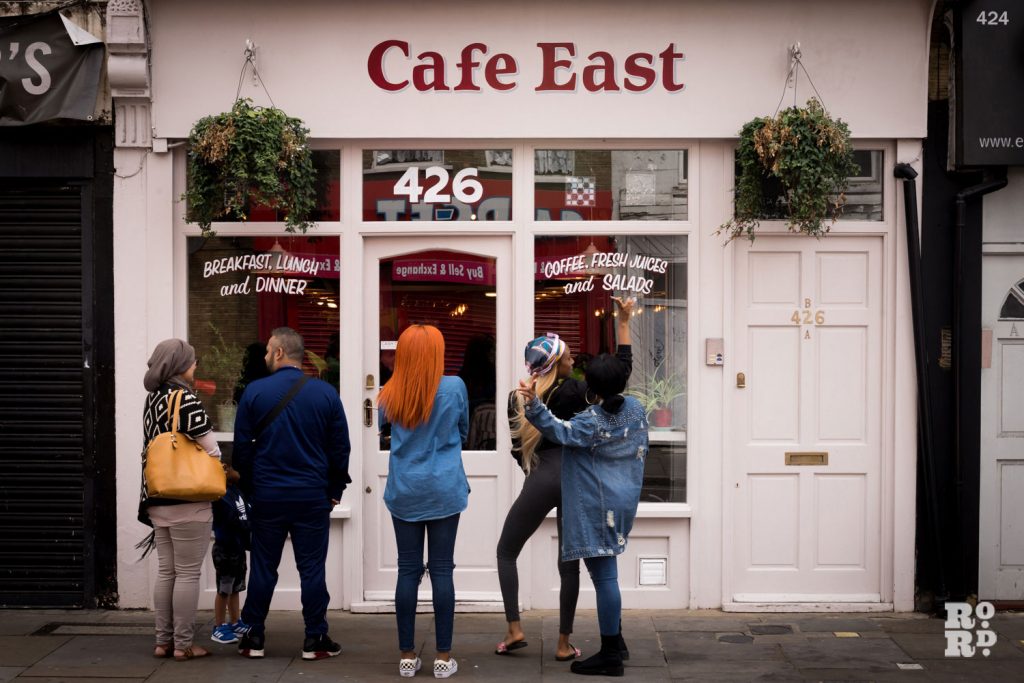
Back on the main road and it’s worth stopping off at the ever-popular Cafe East for lunch. Really, we mean it. Your first impression of Cafe East will most likely be its long queue weaving down the pavement.
What’s all the fuss about? This restaurant’s seating is definitely cosy, but for good reason. ‘Sitting really near to each other is quite common and traditional in the East End, especially in old pie and mash shops,’ says owner Mustafa Has, known by everyone as Mus.
‘We do it because it’s the culture, it’s the vibe. You have to share tables – it’s the way it works here. It brings the community together.’
Their food is just as comforting as their staff; expect breakfasts, brunches, pancakes with halal and vegan options. Just make sure you leave half an hour to queue.
Lord Morpeth Pankhurst mural
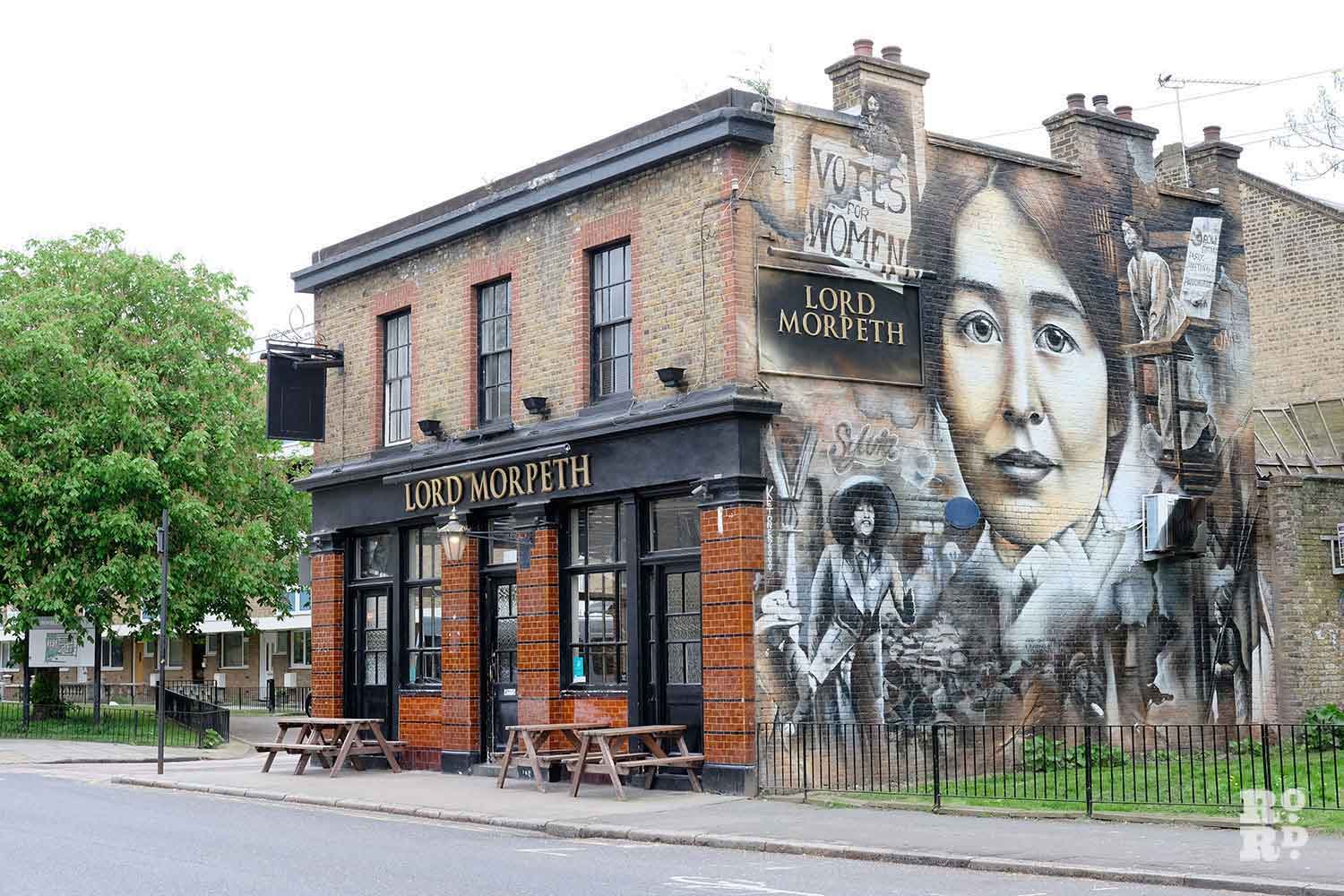
If the line at Cafe East is too long don’t fear, the long-standing boozer Lord Morpeth offers delicious sourdough pizzas for lunch, with a slice of history too – a large mural dedicated to Sylvia Pankhurst.
Lord Morpeth is best known for their large mural of Pankhurst which was unveiled in 2018 and was painted by Australian graffiti artist Jerome Davenport. Along with the portrait, it depicts a woman holding a ‘Votes for Women’ banner in the top left corner and an interpretation of a famous photograph that shows her addressing a crowd in the top right corner. There are clear references to a public meeting she attended at the Bow Baths during which she got dragged off the stage, beaten, and arrested by the police.
Rachel Whiteread House
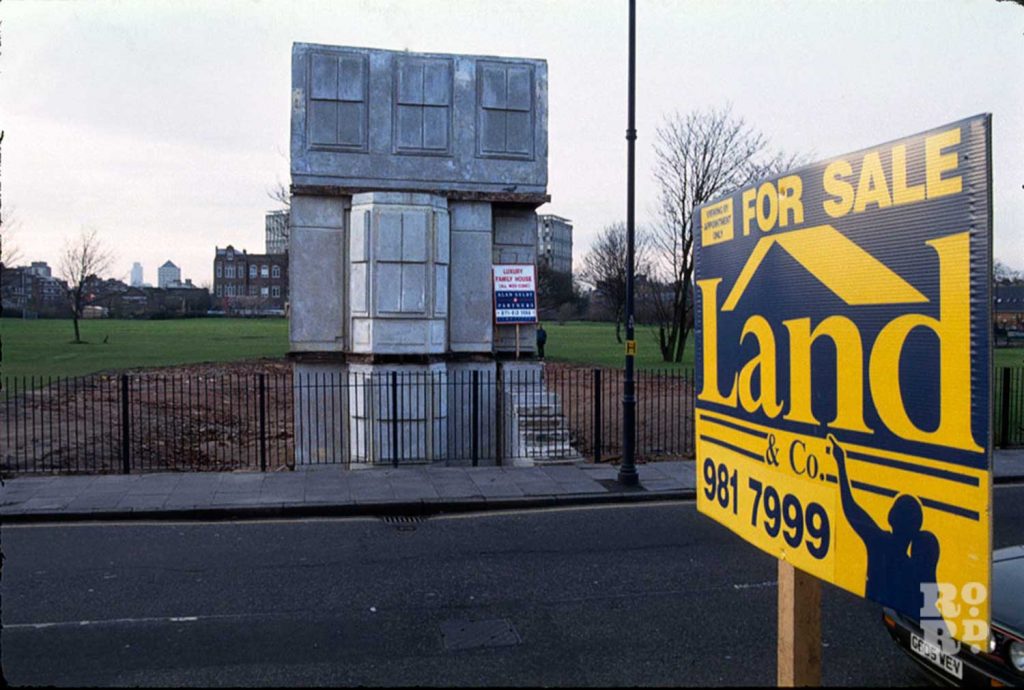
After filling up for lunch, amble over to Wennington Green – a small green that sits inside Mile End Park and borders the Regents Canal. As the sun sets, this is the ultimate spot to catch the final rays of the day’s sunshine. It’s also got a surprising history.
This is the site where artist Rachel Whiteread’s inside-out concrete cast of a poor East End terraced house was erected in 1993 and then subsequently demolished in 1994. Councillor Flounders, Chair of Bow Parks Board, denounced it at the time as ‘excrescent’.
Whiteread conceded: ‘I knew of course, while I was making House, it had a political dimension. You can’t make a cast of a house in a poor area of London and not be political.’ Yet it became ‘far more political than I could have predicted.’
Now, all that’s left of Whitread’s concrete, controversial House are just two benches on the green and a few foundation bricks hidden in the grass.
Symposium for dinner and wine
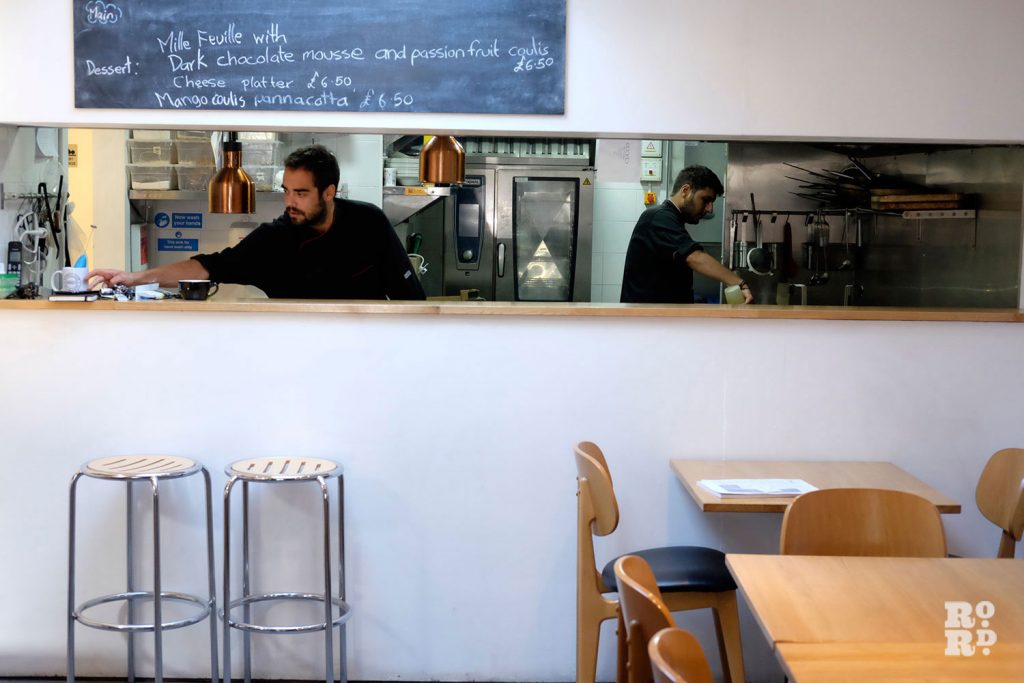
To round off the day, head back to Roman Road to finish with a meal and a glass of vino from Symposium.
Restaurant, deli and wine bar Symposium on Roman Road is an Italian gastro venue offering a good spot for brunch, coffee, cake or a slap up meal. Pick up some Italian cheese and meats from the deli on your way out too.
The front of the restaurant offers just a window seat and the deli-counter, but behind this is an intimate restaurant area and open kitchen area through which you can watch the chefs preparing your meal.
If you enjoyed reading this, you might like learning about the horse stables behind Bow’s police station.

